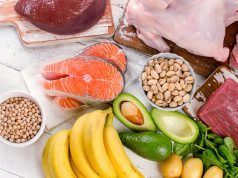In today’s fast-paced world, where convenience often trumps nutrition, maintaining a healthy digestive system can be challenging. Yet, a simple, natural solution exists that can significantly enhance your digestive health: dietary fiber. Often overlooked in our daily diets, fiber plays a crucial role in keeping our digestive systems running smoothly. This article aims to guide you through the myriad benefits of incorporating more fiber into your meals, helping you understand not just the “how” but the “why” behind its importance. By embracing fiber-rich foods, you can nurture your digestive system, alleviate discomfort, and ultimately, improve your overall well-being. Whether you’re seeking relief from occasional digestive issues or aiming to support long-term health, this journey into the world of fiber will empower you to make informed, compassionate choices for your body.
Understanding Fibers Role in Supporting a Healthy Gut
Fiber is a key player in maintaining a balanced and thriving gut ecosystem. Its unique properties help in regulating bowel movements and preventing constipation, which are fundamental to digestive health. Fiber acts like a natural scrub brush for your intestines, clearing out waste and promoting regularity. A diet rich in fiber can also help reduce the risk of developing diverticular disease and hemorrhoids.
- Soluble fiber: Found in oats, peas, beans, apples, citrus fruits, carrots, barley, and psyllium, it dissolves in water to form a gel-like substance. This type of fiber helps lower blood cholesterol and glucose levels.
- Insoluble fiber: Present in foods like whole-wheat flour, wheat bran, nuts, beans, and vegetables, it adds bulk to the stool and helps food pass more quickly through the stomach and intestines.
Moreover, fiber serves as a food source for the beneficial bacteria in your gut. This process, known as fermentation, occurs mainly in the large intestine and results in the production of short-chain fatty acids (SCFAs), which have numerous health benefits. These SCFAs help to strengthen the gut barrier, reduce inflammation, and even contribute to better mental health. The symbiotic relationship between fiber and gut bacteria is crucial for a well-functioning digestive system.
| Fiber Type | Food Sources | Benefits |
|---|---|---|
| Soluble | Oats, beans, apples | Lowers cholesterol, regulates blood sugar |
| Insoluble | Whole-wheat flour, nuts | Promotes bowel movement, prevents constipation |

How Different Types of Fiber Contribute to Digestive Wellness
Incorporating different types of fiber into your diet can significantly enhance your digestive wellness. Fiber is generally categorized into two main types: soluble and insoluble. Each type plays a unique role in maintaining digestive health, contributing to overall well-being.
- Soluble Fiber: This type dissolves in water to form a gel-like substance. It helps regulate blood sugar levels and lower cholesterol. Soluble fiber is found in foods like oats, apples, and beans. By slowing digestion, it allows for better nutrient absorption and can aid in managing diarrhea by adding bulk to stools.
- Insoluble Fiber: This type does not dissolve in water and helps add bulk to the stool, promoting regular bowel movements. It can be found in whole grains, nuts, and vegetables. By preventing constipation, insoluble fiber supports a healthy digestive tract, reducing the risk of developing conditions like diverticulitis.
| Fiber Type | Key Benefits | Food Sources |
|---|---|---|
| Soluble Fiber | Regulates blood sugar, lowers cholesterol | Oats, Apples, Beans |
| Insoluble Fiber | Prevents constipation, promotes regularity | Whole Grains, Nuts, Vegetables |
Understanding how these fibers function can empower you to make informed dietary choices. By integrating a balance of both types into your meals, you can foster a more resilient digestive system and improve your overall health.

Practical Ways to Increase Fiber Intake in Your Daily Diet
Boosting your fiber intake can be easier than you think, and the benefits for your digestive health are well worth the effort. Here are some practical tips to seamlessly integrate more fiber into your daily meals:
- Start Your Day Right: Opt for a breakfast cereal that contains at least 5 grams of fiber per serving. Oats, bran flakes, or a bowl of fresh fruit can be excellent choices to kickstart your morning.
- Snack Smart: Replace low-fiber snacks with fiber-rich options like nuts, seeds, and popcorn. These can satisfy your cravings while boosting your fiber intake.
- Go Whole: Whenever possible, choose whole grain versions of bread, pasta, and rice. They not only add more fiber but also have a richer, more satisfying taste.
For a quick comparison, here’s a simple table highlighting some high-fiber food options you can incorporate into your diet:
| Food | Fiber Content (per serving) |
|---|---|
| Lentils | 15g |
| Chia Seeds | 10g |
| Raspberries | 8g |
Incorporating these tips and food options into your routine can make a significant difference in your fiber intake and overall digestive health. Remember, increasing fiber doesn’t have to be overwhelming; small, consistent changes can lead to big health benefits.

Listening to Your Body: Recognizing and Adapting to Your Fiber Needs
Our bodies often send subtle signals when they need something, and recognizing these cues can make a significant difference in our overall well-being. Paying attention to how you feel after meals can help you identify if your current fiber intake aligns with your body’s needs. Signs your body may need more fiber include:
- Frequent constipation or irregular bowel movements
- Feeling sluggish or fatigued
- Experiencing bloating or gas
- Craving sugary or processed foods
Adapting your diet to meet these needs can be simple. Start by gradually increasing fiber-rich foods like fruits, vegetables, whole grains, and legumes. It’s essential to introduce fiber slowly to allow your digestive system to adjust and to drink plenty of water to help fiber do its job effectively. Here’s a simple comparison to guide you:
| Food Item | Fiber Content (per serving) |
|---|---|
| Apple (with skin) | 4.4g |
| Brown Rice | 3.5g |
| Chickpeas | 12.5g |
| Broccoli | 2.4g |
Remember, listening to your body is a form of self-care. Adjusting your fiber intake can enhance your digestive health and lead to a more vibrant, energetic you.








































